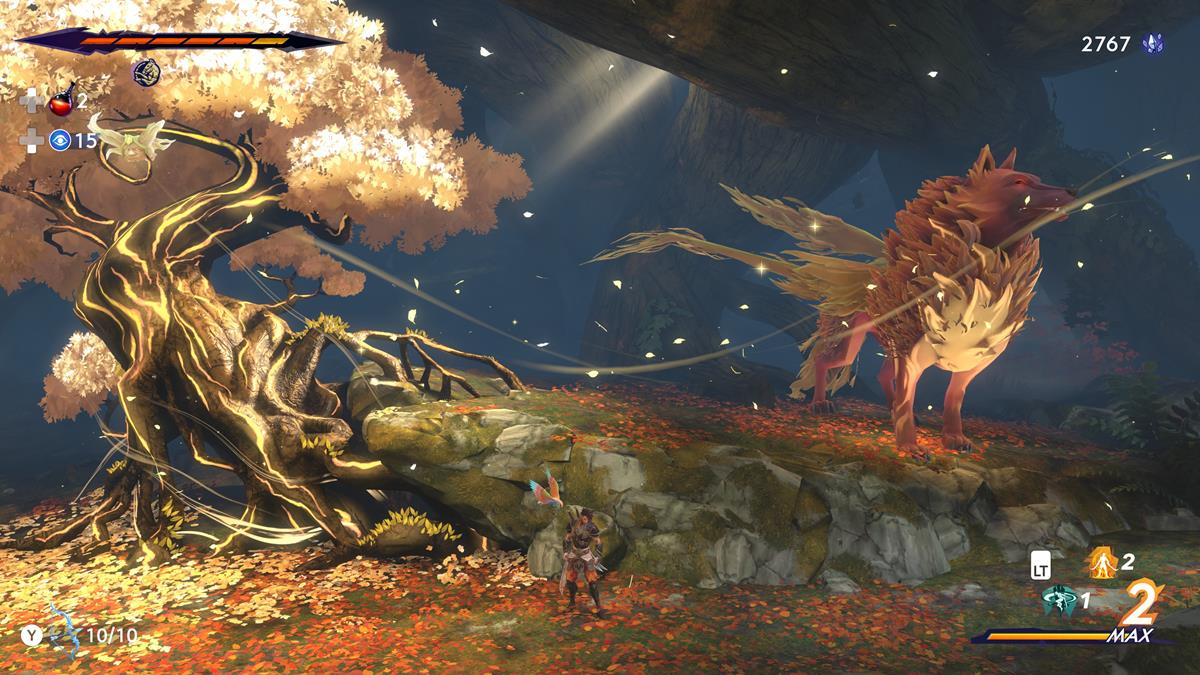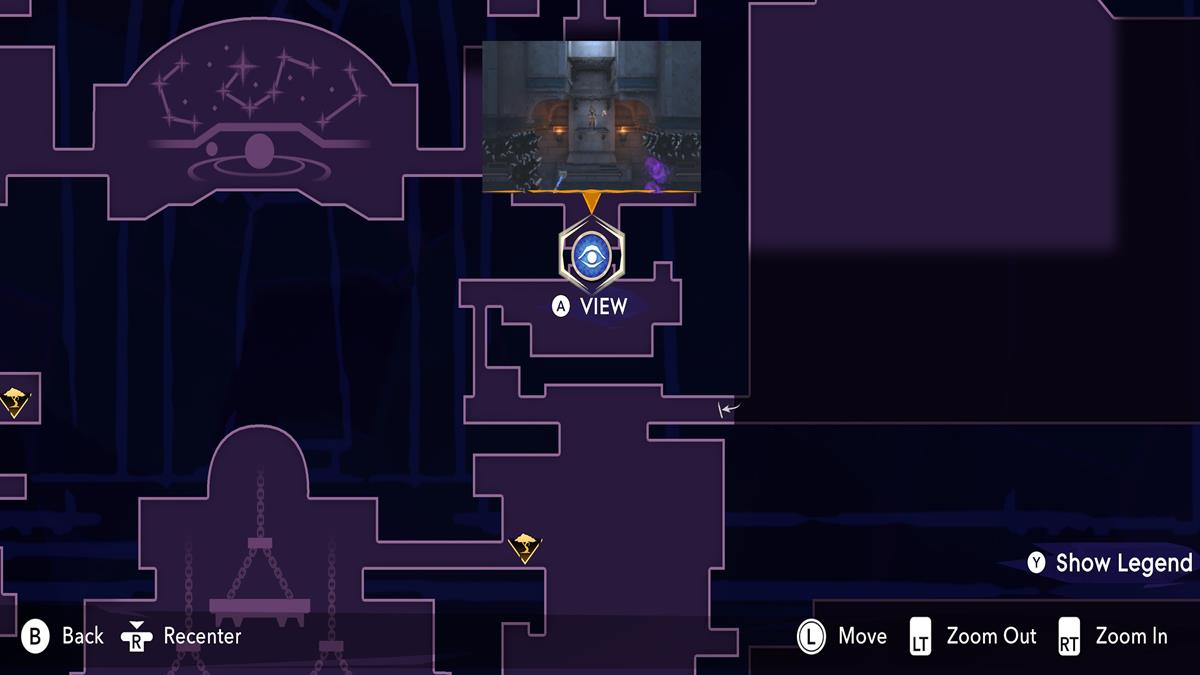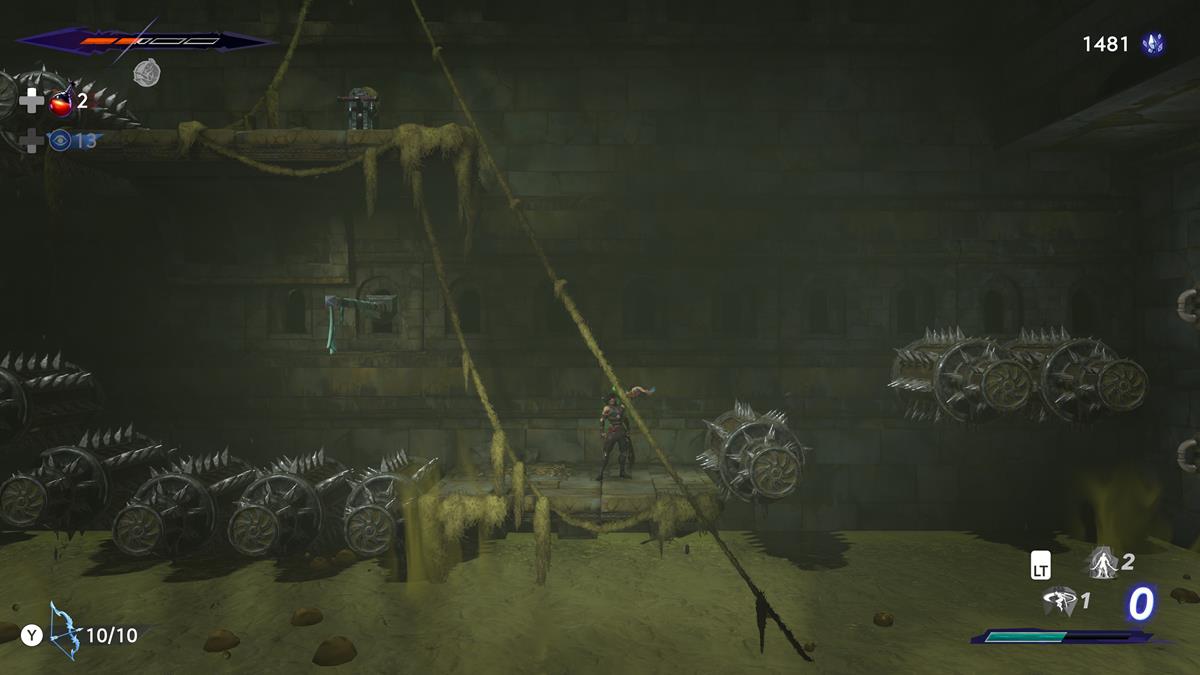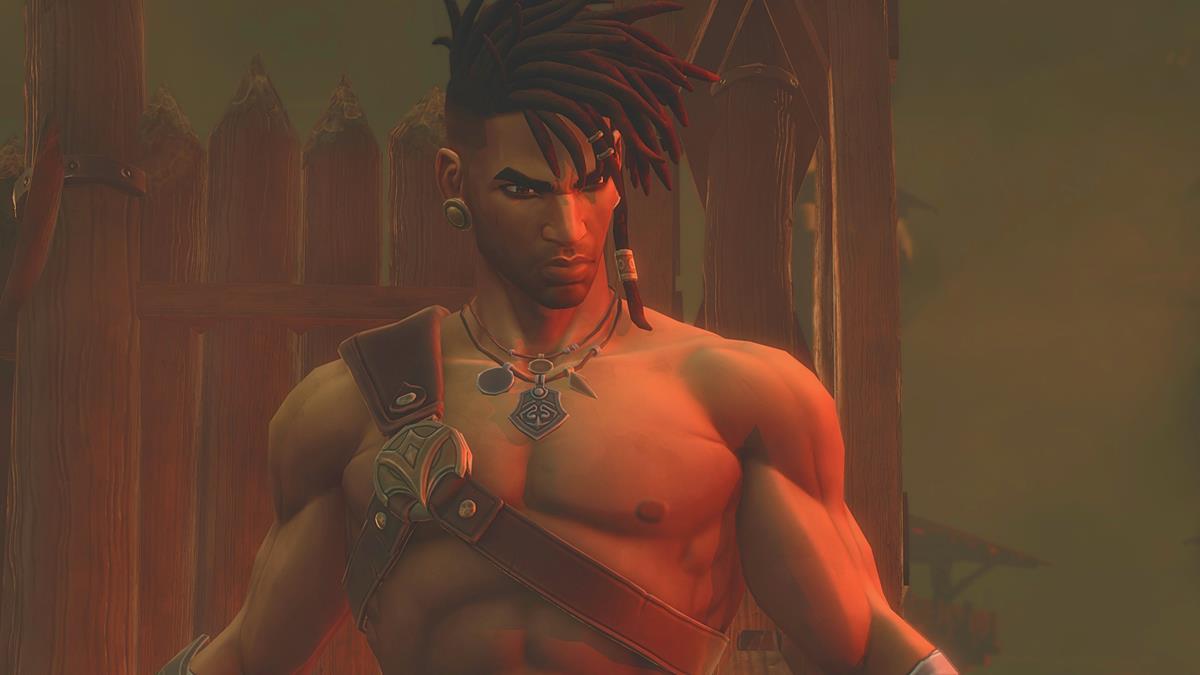As a 2.5D Metroidvania title, Prince of Persia: The Lost Crown returns to the series’ roots as a platformer, while also providing new and improved mechanics. It presents a refreshing take on the genre that should, hopefully, lead to a resurgence for the once-popular franchise.
Prince of Persia: The Lost Crown Review — A Mystifying and Marvelous Metroidvania
Prince of Persia: The Lost Crown introduces Sargon, a young and brash member of the Immortals. As one of the royal family’s vaunted warriors, he bears witness to a darker conspiracy that threatens the land. Along the way, Sargon gains newfound powers, such as those granted by the god Simurgh.
The narrative, which I won’t spoil, has a few twists and turns. Though, those twists can be seen coming a mile away. Nevertheless, the story is easy enough to follow, and it doesn’t bombard you with cryptic hints or confusing details. This is a far cry from the Souls-like Metroidvania sub-genre, such as Blasphemous 2, which had a convoluted storyline that left me scratching my head.

Prince of Persia: The Lost Crown‘s visuals and level design are standouts. As I ventured across Mount Qaf, a cursed fortress where it seemed as though time itself had gone awry, I beheld the different biomes rendered in vivid and bright imagery. One zone was a lush forest teeming with life, and another, a castle’s ramparts with towering minarets dancing in the distance. One seaside area is set against the backdrop of a naval battle.
The graphics are rendered in mesmerizing detail. I often simply sat back to enjoy the scenery, which rarely happens when I play Metroidvania titles. Similarly, being a Metroidvania game means having intricate and labyrinthine-level design, often requiring you to backtrack and open previously-barred areas after gaining new abilities.
Prince of Persia: The Lost Crown certainly exemplifies that characteristic — to a degree. In one particular instance, I had to cross a chasm using the Rush of Simurgh air dash power. However, upon reaching the next area, I realized I couldn’t progress since I’d yet to unlock other needed abilities, such as the double jump and chakram teleport. These locked areas are set within each other like dense layers. Gaining one ability doesn’t mean you can progress in a certain area.

In other Metroidvania titles, hitting this proverbial brick wall often means doing your best to remember a location so you can return much later. Prince of Persia: The Lost Crown makes this process a lot easier thanks to a limited currency called Memory Shards. This function allows you to take a screenshot of a particular room or location, which is then saved on your map.
As someone who enjoys Metroidvania offerings like Salt and Sacrifice, Ender Lilies, and Grime, the concept of having a readily available image on my map was an absolute game-changer. It meant that I could always recheck certain areas and know what I missed out on earlier.
Memory Shards are just one facet since Prince of Persia: The Lost Crown also offers additional accessibility and approachability tweaks. It’s possible to lower the game’s difficulty, switch to Guided Mode, which shows main quest objectives, or even bypass entire platforming sections.

Combat in Prince of Persia: The Lost Crown is fast-paced and frantic. You can perform combos using Sargon’s dual swords, while also mixing things up with a bow and chakram. Likewise, certain encounters encourage you to use your time powers, traversal abilities, and Athra Surges (offensive skills that require a charged meter). Moreover, the game eschews a traditional leveling and XP system, relying instead on permanent upgrades purchased by spending crystals and other resources.
Another notable factor is that you can pretty much complete encounters mostly unscathed. If you perfectly time blocks and dodges, you can catch opponents off-guard. Similarly, enemy attacks with a yellow flash can be countered, proccing a cinematic flourish as Sargon beats down his foe. All in all, I certainly found the combat system enjoyable and easy to understand.

Prince of Persia: The Lost Crown Review — The Bottom Line
Pros
- Gorgeous visuals and intricate level design that encourages you to explore.
- A plethora of traversal and navigation skills, time powers, and special abilities.
- Accessibility options, along with QOL features like Memory Shards.
- Engaging combat system that relies on skillful parrying and dodging.
Cons
- Platforming sections with numerous traps or tight timings can get somewhat frustrating.
- Average story with predictable twists.
Overall, Prince of Persia: The Lost Crown is a refreshing take not just for the long-dormant franchise, but for the modern Metroidvania genre. After completing the campaign in roughly 16 hours (with a bit of side exploration thrown in for good measure), I found it’s approachable for newcomers and presents interesting and engaging challenges for hardcore fans. I can only hope that this leads to bigger sequels down the line.
[Note: Ubisoft provided the Prince of Persia: The Lost Crown PC key used for this review.]







Published: Jan 15, 2024 11:11 am